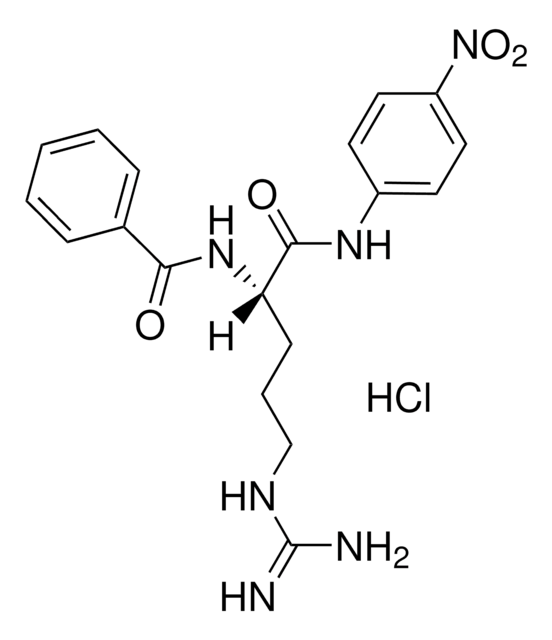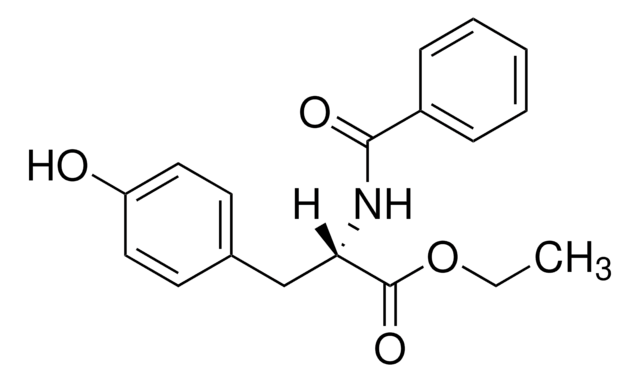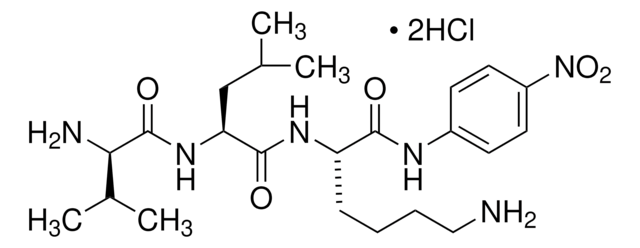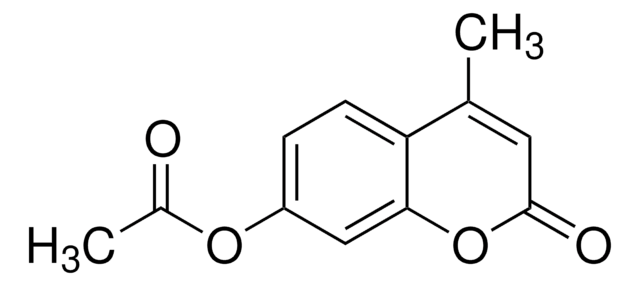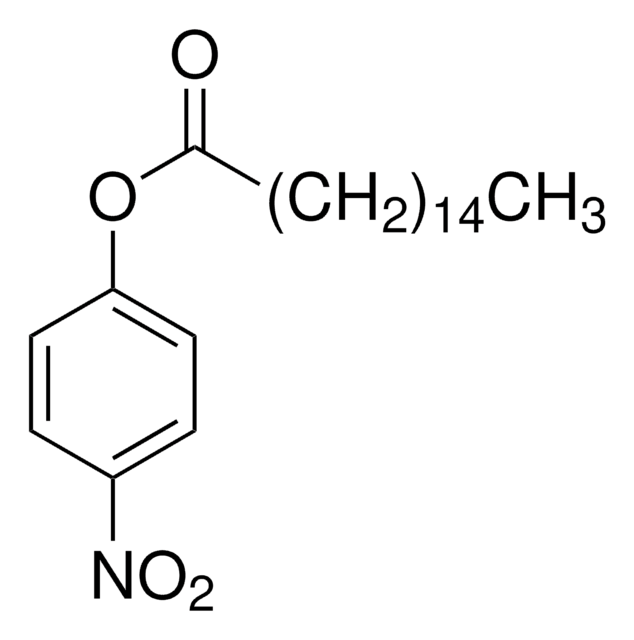N8010
4-Nitrophenyl 4-guanidinobenzoate hydrochloride
protease substrate, ≥95.0% (TLC), powder
Sinónimos:
4-Guanidinobenzoic acid 4-nitrophenylester hydrochloride, NPGB, pNPGB
About This Item
Productos recomendados
Nombre del producto
4-Nitrophenyl 4-guanidinobenzoate hydrochloride, protease inhibitor and substrate
Nivel de calidad
Ensayo
≥95.0% (TLC)
Formulario
powder
solubilidad
formic acid: soluble 49.00-51.00 mg/mL
temp. de almacenamiento
−20°C
cadena SMILES
Cl[H].NC(=N)Nc1ccc(cc1)C(=O)Oc2ccc(cc2)[N+]([O-])=O
InChI
1S/C14H12N4O4.ClH/c15-14(16)17-10-3-1-9(2-4-10)13(19)22-12-7-5-11(6-8-12)18(20)21;/h1-8H,(H4,15,16,17);1H
Clave InChI
PKSBDZOBYIKNGY-UHFFFAOYSA-N
¿Está buscando productos similares? Visita Guía de comparación de productos
Descripción general
Aplicación
- as a substrate for trypsin for active site titration experiments
- for pre-treating of mosquito eggs in the interplasmid transposition assay
- as a component of isotonic buffer to moisten filter paper for mosquito embryo collection
Acciones bioquímicas o fisiológicas
Palabra de señalización
Danger
Frases de peligro
Consejos de prudencia
Clasificaciones de peligro
Eye Dam. 1
Código de clase de almacenamiento
11 - Combustible Solids
Clase de riesgo para el agua (WGK)
WGK 3
Punto de inflamabilidad (°F)
Not applicable
Punto de inflamabilidad (°C)
Not applicable
Equipo de protección personal
dust mask type N95 (US), Eyeshields, Gloves
Elija entre una de las versiones más recientes:
Certificados de análisis (COA)
¿No ve la versión correcta?
Si necesita una versión concreta, puede buscar un certificado específico por el número de lote.
¿Ya tiene este producto?
Encuentre la documentación para los productos que ha comprado recientemente en la Biblioteca de documentos.
Nuestro equipo de científicos tiene experiencia en todas las áreas de investigación: Ciencias de la vida, Ciencia de los materiales, Síntesis química, Cromatografía, Analítica y muchas otras.
Póngase en contacto con el Servicio técnico


